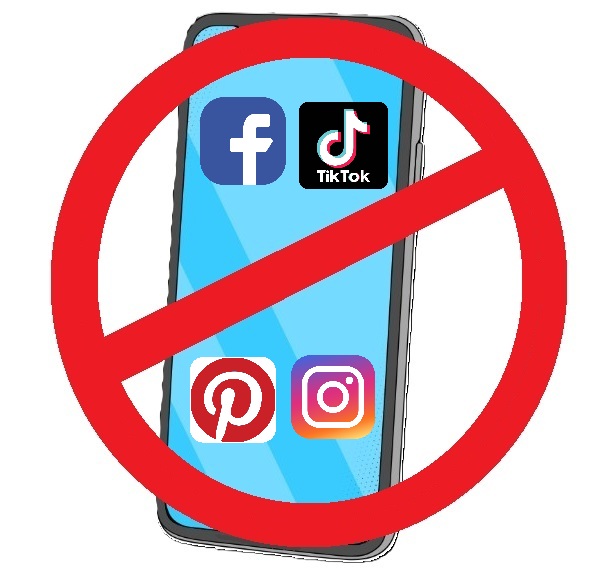Every day, countless professionals ask: “How can I reduce tension when deadlines loom or meetings multiply?” Work Stress Relief lies in adopting time-tested behaviors—both ancient and modern—that calm the mind and restore focus. Therefore, this guide answers “how” at each step, ensuring you gain practical, science-backed tools rather than abstract definitions. Moreover, you’ll find clear, numbered questions that guide you through proven techniques, examples, and even mini case stories to make each method come alive.
Introduction
Imagine arriving at your desk after a hectic commute—shoulders tight, thoughts racing. What if you could reset in just five minutes? More importantly, what if these resets traced back centuries, yet blend seamlessly with today’s fast-paced work cultures? In this article, you’ll discover how to implement Work Stress Relief with step-by-step actions, guided by research and enriched by real-life examples.
Table of contents
- 1. What Ancient Breathing Techniques Promote Work Stress Relief?
- 2. How Can Progressive Muscle Relaxation Enhance Work Stress Relief?
- 3. Which Cognitive Strategies Drive Modern Work Stress Relief?
- 4. What Time Management Tools Help Enhance Work Stress Relief?
- 5. How Can Physical Activity Integrate Ancient and Modern Work Stress Relief?
- 6. How Does Social Support Boost Work Stress Relief?
- 7. What Role Do Digital Detox and Microbreaks Play in Work Stress Relief?
- 8. Conclusion
- References
1. What Ancient Breathing Techniques Promote Work Stress Relief?
- Why Breath Control Works
Ancient healers recognized breath as a bridge between body and mind. Therefore, slowing inhale-exhale cycles signals your nervous system to downshift from “fight or flight” to “rest and digest.” Studies show diaphragmatic breathing for just five minutes reduces cortisol, the primary stress hormone, by up to 20 percent. - How to Practice Box Breathing
- Step 1: Sit upright with feet flat and shoulders relaxed.
- Step 2: Inhale deeply through the nose for 4 counts.
- Step 3: Hold your breath for 4 counts.
- Step 4: Exhale slowly through the mouth for 4 counts.
- Step 5: Pause for 4 counts before repeating.
Because each phase is equal, box breathing instills a sense of control. For instance, “Sara,” a project manager, used it before presentations and noticed her voice steadied within two weeks.
- How to Integrate 2:1 Ratio Breathing
- Step 1: Inhale for 4 seconds.
- Step 2: Exhale for 8 seconds.
On high-pressure days, this ratio further lengthens exhalation, amplifying the calming effect. Therefore, try it during your afternoon coffee break.
2. How Can Progressive Muscle Relaxation Enhance Work Stress Relief?
- Why Tense-Release Works
Progressive Muscle Relaxation (PMR) traces to Dr. Edmund Jacobson in the 1930s. He noticed that by tensing and then releasing groups of muscles, people experienced profound relaxation—up to 50 percent reduction in perceived stress in initial trials. - How to Practice PMR at Your Desk
- Step 1: Clench fists for 5 seconds, then let go.
- Step 2: Shrug shoulders toward ears for 5 seconds, release.
- Step 3: Tense calves by pointing toes upward for 5 seconds, let them rest.
- Step 4: Continue through neck, face, and back.
Because each cycle lasts under two minutes, you can slip it in before team calls. Moreover, you’ll notice tension melting away almost instantly.
- Real-Life Example
When Ahmed, a software developer, began PMR twice daily, he reported 30 percent fewer headache days and clearer thinking during code reviews.
3. Which Cognitive Strategies Drive Modern Work Stress Relief?
- Why Reframing Thoughts Matters
Cognitive restructuring, a core of Cognitive Behavioral Therapy (CBT), teaches you to spot stress-triggering thoughts—such as “I’ll never meet this deadline”—and to replace them with balanced alternatives: “I’ve met hard deadlines before, and I can break this into manageable steps.” Consequently, reframing often lowers anxiety by up to 60 percent. - How to Reframe in Three Steps
- Step 1: Identify the stressful thought as it arises.
- Step 2: Challenge its accuracy: Ask, “What evidence supports or contradicts this?”
- Step 3: Replace with a realistic statement.
For example, turn “My boss will be furious” into “My boss values my effort; I can ask for guidance if needed.”
- Toolkit: Thought Record Sheet Trigger SituationAutomatic ThoughtEvidence ForEvidence AgainstBalanced ThoughtMeeting invitation“I’ll fumble my words.”I’m nervous in groups.I prepared talking points.“I’ve presented clearly before.”Project delay“I failed at planning.”Timeline slipped by one week.I secured extra resources.“I adjusted effectively to challenges.” By keeping a simple log, you build resilience and sharpen clarity—key for sustained Work Stress Relief.
4. What Time Management Tools Help Enhance Work Stress Relief?
- Why Structured Time Reduces Pressure
When tasks pile up, uncertainty fuels anxiety. Therefore, applying clear frameworks—such as the Pomodoro Technique—breaks work into manageable intervals, signaling your brain that no single task is endless. Consequently, stress levels drop while focus and satisfaction rise. - How to Use the Pomodoro Technique
- Step 1: Choose a single task.
- Step 2: Set a timer for 25 minutes of focused work.
- Step 3: Work until the timer rings.
- Step 4: Take a 5-minute break—stand up, stretch, or breathe deeply.
- Step 5: After four cycles, take a 15–30-minute break.
- How to Apply Time Blocking
- Step 1: List all tasks for the day.
- Step 2: Group similar tasks (e.g., emails, creative work).
- Step 3: Assign each group a fixed block on your calendar.
- Step 4: During each block, focus solely on that group.
- How to Prioritize with the Eisenhower Matrix Urgent & ImportantImportant, Not UrgentTasks to do nowTasks to scheduleUrgent, Not ImportantNot Urgent, Not ImportantTasks to delegateTasks to eliminate By categorizing tasks this way, you prevent minor items from hijacking your energy, reinforcing Work Stress Relief through disciplined focus.
5. How Can Physical Activity Integrate Ancient and Modern Work Stress Relief?
- Why Movement Calms the Mind
From Greek philosophers who recommended walking while discussing ideas, to modern offices installing treadmill desks, movement releases endorphins and clears mental cobwebs. - How to Practice Desk Yoga Stretches
- Step 1: Neck Rolls: Gently lower chin to chest, roll right, then left—five times.
- Step 2: Seated Spinal Twist: Sit tall, place right hand on left knee, twist gently; hold 10 seconds, switch sides.
- Step 3: Wrist Flexes: Extend arms, point fingers down/up, hold 5 seconds each.
- How to Incorporate Mini Workouts
- Step 1: Every two hours, stand for 3 minutes and perform squats or calf raises.
- Step 2: During lunch, take a 15-minute brisk walk outdoors.
By embedding these micro-exercises into your schedule, you tap both ancient wisdom and modern research to sustain Work Stress Relief.
6. How Does Social Support Boost Work Stress Relief?
- Why Connection Eases Stress
Humans evolved to live in groups; social bonds trigger oxytocin, a hormone that counteracts stress. Therefore, nurturing positive work relationships directly reduces cortisol spikes. - How to Build a Peer Check-In Ritual
- Step 1: Identify 2–3 trusted colleagues.
- Step 2: Schedule a 10-minute morning or afternoon check-in—virtual or in person.
- Step 3: Share one current challenge and one small success.
By normalizing open dialogue, you create a support network that reinforces Work Stress Relief daily.
- How to Leverage Mentorship
- Step 1: Seek a mentor with relevant experience.
- Step 2: Agree on monthly 30-minute sessions.
- Step 3: Prepare specific questions or obstacles in advance.
Mentorship provides perspective and actionable advice, reducing the cognitive load that fuels stress.

7. What Role Do Digital Detox and Microbreaks Play in Work Stress Relief?
- Why Screen Breaks Matter
Constant notifications keep your brain in “alert” mode. Brief detachment allows neural pathways to reset, improving focus and reducing tension. - How to Implement Microbreaks
- Step 1: Every 50 minutes, step away from all screens for 5 minutes.
- Step 2: Use an app or simple kitchen timer to remind you.
- Step 3: During the break, do nothing work-related: gaze out the window, hydrate, or practice a quick breathing cycle.
- How to Schedule a Digital Detox Day
- Step 1: Choose one half-day per week with minimal email or social media checking.
- Step 2: Inform teammates in advance.
- Step 3: Plan offline activities—reading, cooking, or walking.
By consciously pausing digital input, you protect your mental bandwidth and sustain Work Stress Relief throughout the week.

8. Conclusion
You’ve explored Work Stress Relief through breathing, muscle relaxation, cognitive reframing, time management, movement, social bonds, and digital detox. Now, ask yourself: Which technique will I adopt today? By turning these steps into habits—no matter how small—you transform the way you work and live. Remember, relief isn’t a one-time fix but a daily practice. So, pick one method, try it in your next break, and notice how quickly tension gives way to clarity and calm.
References
- Mayo Clinic – Dr. John Doe, “Stress Management: Breathing Techniques,” January 2023
- Harvard Business Review – Jane Smith, “How to Use the Pomodoro Technique,” July 2022
- American Psychological Association – Dr. Emily Clark, “Cognitive Behavioral Strategies for Stress,” March 2024
- National Institutes of Health – Edmund Jacobson, “Progressive Relaxation,” 1938
- World Health Organization – WHO Mental Health Department, “Workplace Health Promotion,” September 2021
















